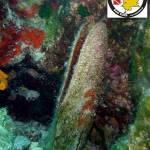- Home
- Beginners
- Certified Divers
- Prices & Offers
- Kalymnos holidays
- Dive Sites
- Dive sites explored by our personell
- Amphoras garden
- Dolphins bay
- Emma's reef
- Gefyra shore
- Kalymnos Diving Park
- Labyrinth of Telendos
- Melitsacha shore
- Natura 2000
- Natural Aquarium
- Panormitis wreck
- Platy Gialos shore
- Queen of Telendos
- Shrimps cave
- Sponge farm
- Sunken City
- Thor Star Wreck
- Vlichadia shore
- Volcano
- Vouros philoxenia
- Wooden shipwreck
- GRIGORIS MOUZOURAKIS
- Habitats (reefs, caverns, caves, canyons, walls)
- STAVROS VALSAMIDIS
- Underwater Fauna and Flora of Kalymnos Island
- Videos from our dives on Kalymnos Island
- Dive sites explored by our personell
Bivalve (Pinnas, Clams, Oysters, Mussels, Cockles, Scallops)
Identified until now
From Wikipedia
The Bivalvia, in previous centuries referred to as the Lamellibranchiata and Pelecypoda, comprise a class of marine and freshwater molluscs that have laterally compressed bodies enclosed by a shell consisting of two hinged parts. They have no head, and they also lack a radula.
Bivalves include clams, oysters, cockles, mussels, scallops, and numerous other families that live in saltwater, as well as a number of families that live in freshwater. The majority are filter feeders. The gills have evolved into ctenidia, specialised organs for feeding and breathing. Most bivalves bury themselves in sediment, where they are relatively safe from predation. Others lie on the sea floor or attach themselves to rocks or other hard surfaces. A few bore into wood, clay or stone and live inside these substances. Some bivalves, such as the scallops, can swim.
The shell of a bivalve is composed of calcium carbonate, and consists of two, usually similar, parts called valves. These are joined together along one edge (the hinge line) by a flexible ligament that, usually in conjunction with interlocking "teeth" on each of the valves, forms the hinge. This arrangement allows the shell to be opened and closed without the two halves becoming disarticulated. The shell is typically bilaterally symmetrical, with the hinge lying in the sagittal plane. Adult shell sizes of bivalves vary from fractions of a millimetre to over a metre in length, but the majority of species do not exceed 10 cm (4 in).
Bivalves have long been a part of the diet of coastal human populations. Oysters were cultured in ponds by the Romans, and mariculture has more recently become an important source of bivalves for food. Modern knowledge of molluscan reproductive cycles has led to the development of hatcheries and new culture techniques. A better understanding of the potential hazards of eating raw or undercooked shellfish has led to improved storage and processing.
Pearl oysters (the common name of two very different families in saltwater and freshwater) are the most common source of natural pearls.
The shells of bivalves are used in craftwork, and the manufacture of jewellery and buttons. Bivalves have also been used in the biocontrol of pollution.
Read more: http://en.wikipedia.org/wiki/Bivalvia
Photos: http://www.european-marine-life.org/14/bivalves-gallery.php
- 16213 reads
 Ελληνικά
Ελληνικά
Visit our website for more information: kalymnosdiving.gr
 Our facebook page with daily cativity and photos: facebook.com/kalymnosdiving
Our facebook page with daily cativity and photos: facebook.com/kalymnosdiving
Contact us

+30 6973015550 ☎
Mikes Reissis, Owner & Managing Instructor, Reservations

+30 6947604120 ☎
Nikolas Reissis, Information
Find us
About us
Kalymnos Island
Kalymnos is an unspoiled picturesque Greek island. Located between Kos Island and Leros Island in the Aegean sea, Greece.
KALYMNOS Diving Center
We are an authorized PADI 5 Star Dive Resort. The only one on the island. Pioneer since 2008.
With individual care and attention, we offer:
Recreational scuba diving and PADI training for beginners and for certified divers.
We offer Free PADI eLearning for all courses.
- Register now directly with PADI.
- Or read more about our Free PADI eLearning.



